Cover image: Asmodeus, Lord of the Ninth by Aleksi Briclot
I caught it bad yesterday
You hit me with a call to your place
Ain’t been out in a while anyway
Was hopin’ I could catch you throwin’ smiles in my face
The opening lines of Lil Nas X’s “Montero (Call Me By Your Name)” are sung out as the camera follows the biblical Serpent to the forbidden tree, where our singer’s version of Adam strums his guitar. (You can watch the video here.) As the artist begins his inverse journey from an Edenic paradise to hell, Tanu Muino and Lil Nas X’s video for “Montero” continues to draw deeply from Jewish, Greek, and Christian literature and symbolism. From the creation narrative of Genesis to the Symposium of Plato, from the legend of Lilith to the Divine Comedy of Dante and the alternately idyllic and hellish landscape of Heironymous Bosch’s Garden of Earthly Delights, “Montero” brings us grandiose, symbolic costuming and set design that augments and recontextualizes otherwise simple lyrics about desire.
Cocaine and drinkin’ with your friends
You live in the dark, boy, I cannot pretend
I’m not fazed, only here to sin
If Eve ain’t in your garden, you know that you can…
Lil Nas X continues to twist narrative expectations as the video continues: once seduced by the Serpent, he then becomes the seducer; once offered heaven, he chooses not merely to “pole dance to hell,” but to slay the devil in the aftermath of a lap dance, usurping his dark throne. “Better to reign in Hell than serve in Heaven,” Milton has Satan say in Paradise Lost. Lil Nas X has his character embody these words, simultaneously dismissing anathemas and provoking even more judgment from conservative Christian congregations.
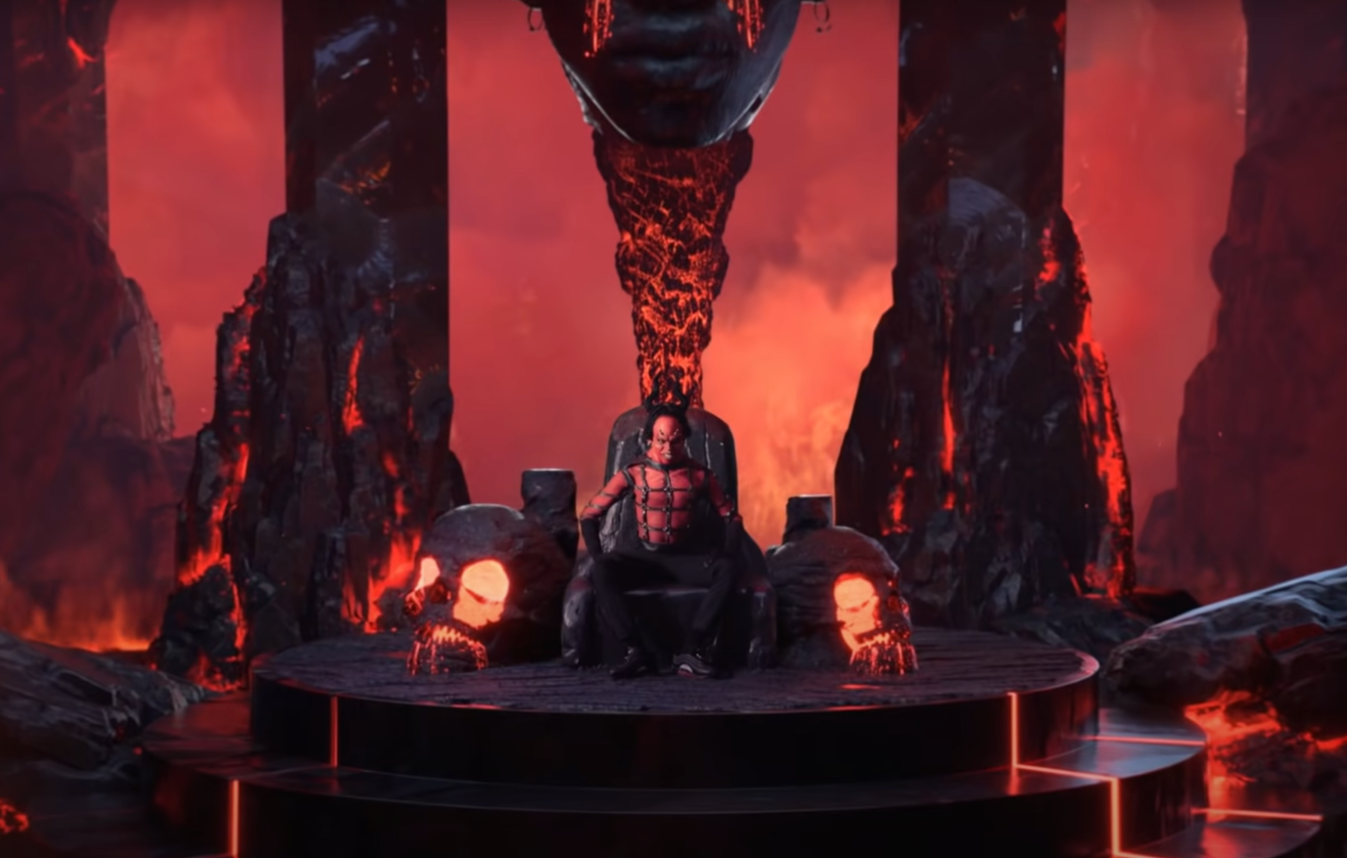
Scene from “Montero (Call Me By Your Name)”, directed by Tanu Muino and Lil Nas X
Why am I beginning an essay on Magic: the Gathering with a brief summary of a hip-hop video? Two reasons: the first is purely visual. When the spoiler for Asmodeus the Archfiend dropped, the art was iconic, and I had to ask myself, “Have I seen this before?” The image of the crimson cloaked archduke of hell on his throne has become so iconic that I couldn’t shake the feeling of familiarity. “Montero,” of course, isn’t a perfect match, but it treads familiar brimstone ground.
The second reason, however, owes to where “Montero” led me: Desire. And not just desire, but the interesting combination and juxtaposition of desire, redemption, and the demonic, or devilish. Montero isn’t the first story of the Devil meeting his end and our characters triumphing because his own desire gets the best of him.

Tim Curry as the Lord of Darkness in 1985’s Legend, directed by Ridley Scott.
Asmodeus’s broad horns and throne certainly reminded me of Tim Curry’s Lord of Darkness, from Legend (1985), in which the diabolical stand-in for Satan falls in love with the mortal Lili, who uses Darkness’s love for her to stall him until he can be vanquished with the help of a young man named Jack. Instead of using Darkness’s desire to rule in the Underworld, however, Lili and Jack ride off to uncertain futures.
What’s more, these two stories are only some recent examples. The name “Asmodeus” already carried the connotation of desire long before it appeared on a Magic card or before Tim Curry was capturing maidens and unicorns. By the 15th or 16th century, Christians, infusing Jewish demonology with Christian theology, had categorized Asmodeus as the demon of lust, but his story is much, much older.
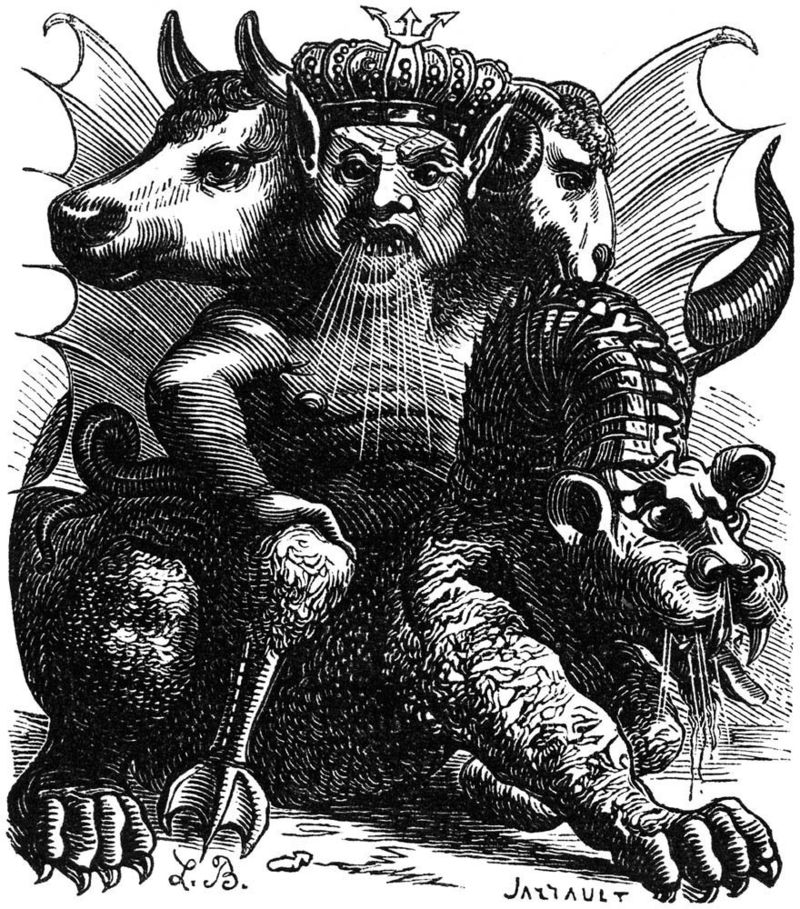
A depiction of the demon Asmodeus
The Origins of Asmodeus
Names and imagery borrowed from ancient texts and traditions carry vestiges of their past, whispers of meaning that help us enter more fully into the fantastic worlds that game designers weave with words and art. In that vein, the name “Asmodeus” has been borrowed a lot. From the identically-named poisonous asp of Brian Jaques’s Redwall to Diablo’s Lord of Sin, Azmodan, the syllables have become pop culture shorthand for a being of hellish power. The echoes of the past took me even further back, however; gazing upon Asmodeus the Archfiend, I found myself transported to the setting of a lesser known book of the Bible, one of the so-called “apocryphal” texts: The Book of Tobit.
Written around 200 BCE by an anonymous Jewish author, Tobit takes place in what was already by then a distant past: the exile of the Jewish people in the land of Babylon. It tells an intimate story of two people in need of healing: Tobit, a saintly old man who has been rendered blind and impoverished, and his distant relative, Sarah, whose suitors all perish on their wedding nights.
It is in Sarah’s story that we meet Asmodeus:
[Sarah] had been given in marriage to seven husbands, but the wicked demon Asmodeus kept killing them off before the unions could be consummated. Sarah’s maid said to her: “You are the one who kills your husbands! Look! You have already been given in marriage to seven husbands, but you do not bear the name of a single one of them.”
Sarah despairs, and prays for death. The prayers of Tobit and Sarah are heard, and God sends the archangel Raphael in disguise to help the cause of Tobit and Sarah’s despair. Tobit’s son Tobias agrees to go on a journey with Raphael (and a random dog) to find his father’s lost fortune, which Raphael uses as an excuse to bind the demon Asmodeus, get Tobias to marry Sarah, and cure Tobit’s blindness. Everyone lives happily ever after!
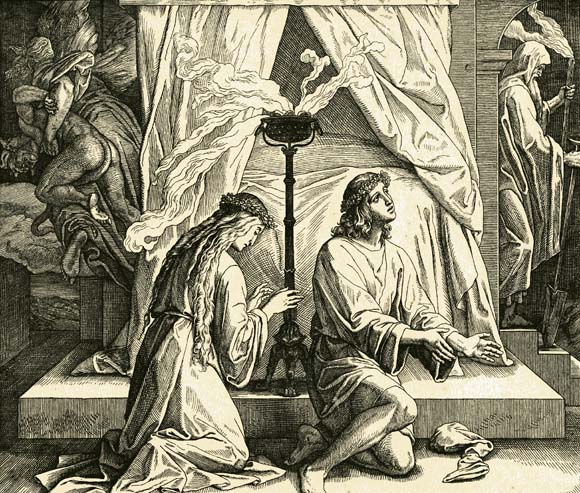
Tobias marries Sarah while the Archangel Raphael binds the demon Asmodeus.
Though his role in the story is brief, Asmodeus would continue to ignite the imaginations of especially Jewish scholars, who would later call him the king of demons. Solomon was rumored to have bound him into service centuries earlier to build the First Temple of Jerusalem. Later commentators would give him motivation: Asmodeus is said to have killed Sarah’s seven successive husbands because of jealousy; he was smitten with love for her. He is said later to have taken Lilith, queen of demons and mother of monsters, as a consort.
Dark Dungeons
In Magic’s Dungeons & Dragons: Adventures in the Forgotten Realms, Asmodeus appears alongside Zariel, Archduke of Avernus as denizens of hell from the module Baldur’s Gate: Descent into Avernus. Elements of the story of Tobit that remain are only faintly present, and probably by accident: Zariel was once an angel, her name shares some vague similarities with both Sarah and Raphael, and that’s about it. Even so, Zariel’s story still has something to say about desire (though not of the same kind).
This Asmodeus, however, is a far cry from being a Lord of Lust. When Asmodeus entered Dungeons and Dragons in 1977, in the pages of the very first monster manual, he wasn’t much like his real-world counterpart. D&D’s Asmodeus isn’t easily bound, or smitten by mortal women. In Jeff Grubb’s Manual of the Planes from 1980, Asmodeus is characterized as the archduke of the nine hells and ruler over a crew of devils borrowed from real-world cosmologies that often bear few things in common with their ancient near-eastern namesakes: Belial, Baalzebub, Mammon, and Moloch fly from the pages of the Bible, Tiamat and Nergal emerge from Babylonian myths like the Enuma Elish and the Epic of Erra. Roman, Greek, and Egyptian gods of the dead emerge as well, smashed together in an irreverent pastiche of Abrahamic and polytheistic images of the afterlife of the damned. Instead of being the Don of Devilish Desire, Asmodeus took on the characteristics of a number of other figures such as the serpent in the garden, and the fallen Prince of the Air, Lucifer.
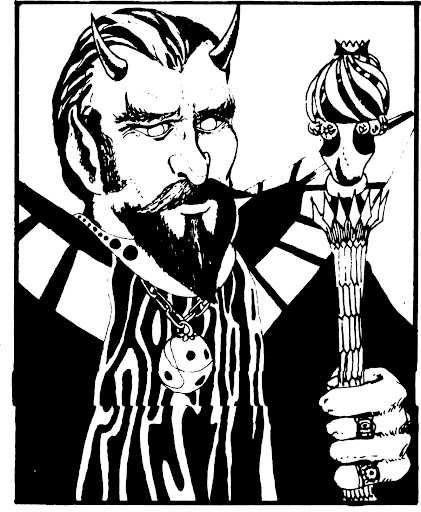
Asmodeus in the 1970s. Times were different, then.
Saving Zariel
Fifth edition Dungeons & Dragons, however, might be read as reinstating a piece of the Asmodean legends at least in faint relief. In Baldur’s Gate: Descent into Avernus, we learn that Asmodeus succeeded in making a pact with the angel Zariel because she zealously desires to destroy the demons of the Abyss. In bargaining with the Lord of the Ninth for the legions she can command in the Blood War against the Abyss, she falls from grace, becomes an archdevil, and rules over Avernus, the first layer of Hell.
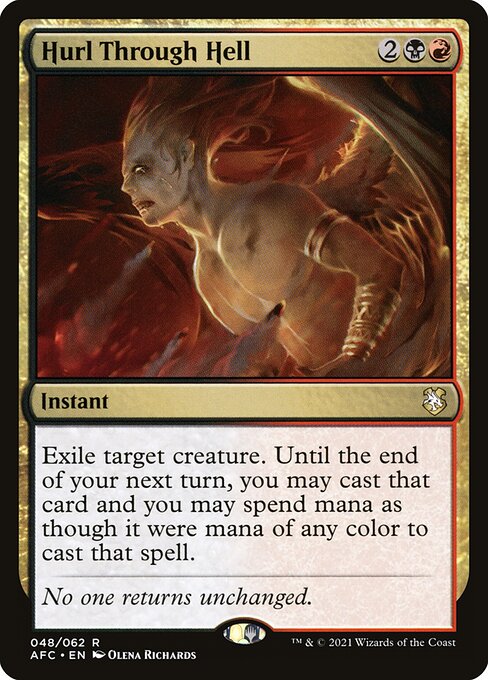
Despite an important difference between S and Z in transliterated Hebrew, and despite a more probable inspiration (I’ll get there shortly), I immediately began to compare the plight of Tobit’s Sarah to the plight of Zariel. The connection is admittedly loose, but Zariel also suffers at the hands of an Asmodeus and awaits her redemption. In this case, it was not her mortal beauty that Asmodeus was interested in, but the angel’s fall and her potential power as archduke over Avernus. In the Book of Tobit, some interpreters have ventured that it was the objectifying desire of the suitors for Sarah that gave Asmodeus the power to slay them, and here, Zariel’s desire to destroy the demons of the Abyss makes her easy prey for Asmodeus’s devilish bargain.
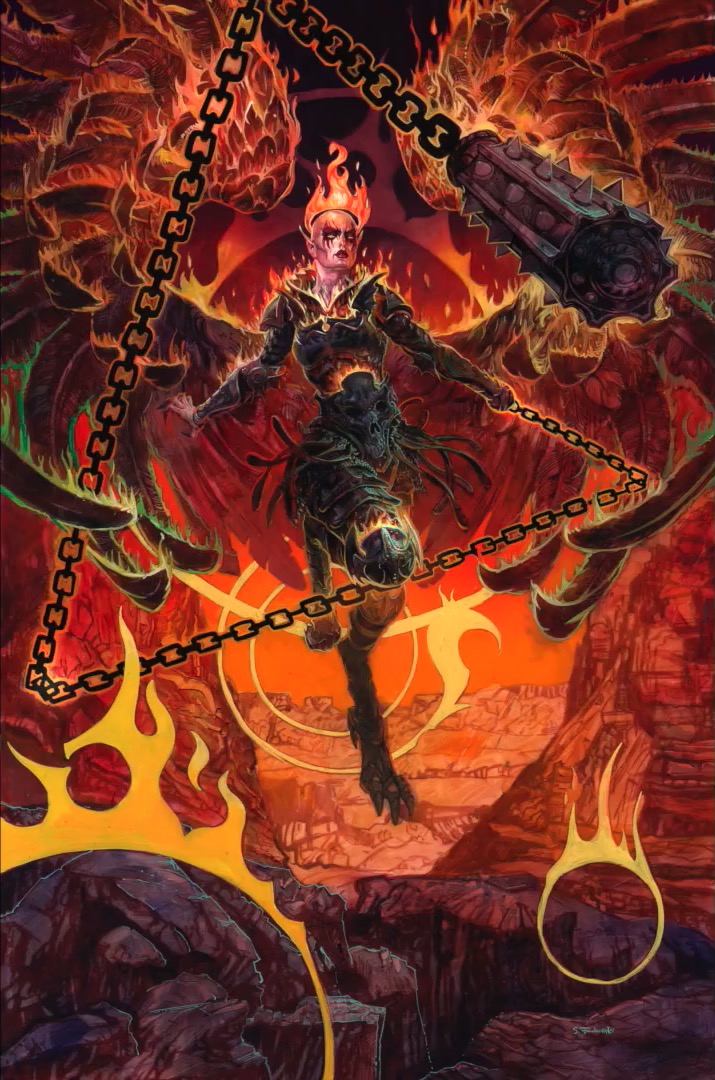
Zariel, Archduke of Avernus by Scott Fischer
Savvy students of religions and/or Neon Genesis Evangelion will recognize “Zariel” as being evocative of Hebraic names for the seven archangels (Michael, Raphael, Gabriel, and so on). Those familiar with Hebrew might see the root “zar” (not “sarah”) and interpret the archduke’s name to mean “Estranged from God.”
This estrangement is the plight of Zariel in Descent into Avernus. Like Tobias, who (in some commentaries) evades the demon Asmodeus by seeing Sarah for who she is, and not reducing her to an object of sexual desire, PCs playing through Descent into Avernus can redeem Zariel by showing her the truth of herself, the glimmering essence of the angelic warrior she once was. Her desire for justice triumphs over her desire to wage war against the Abyss, and she is restored to her angelic form and to friendship with Lulu, the Hollyphant.
Taming the Tempter, Finding Ourselves
From his throne in Hell, the figure of the devilish Asmodeus represents the potentially infernal consequences of temptation, seduction, and desire. On Asmodeus the Archfiend, the notion of a dark bargain is communicated by the exchange of life for cards; if that weren’t enough, his role as a stand-in for the Devil of Christian cosmology is telegraphed by the presence of six black pips on the card, a power/toughness of 6/6, and a casting cost of 6, evoking the so-called “number of the Beast” from the Apocalypse of John.
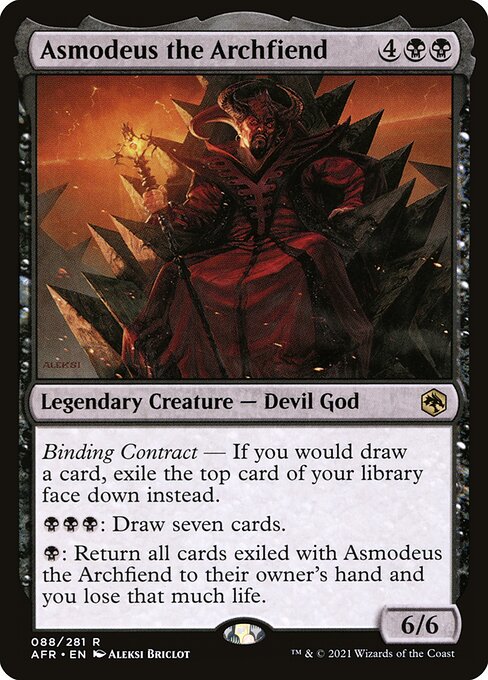
In the cosmological tradition that brought the name “Asmodeus” to pop culture, redemption involves, in part, discovering one’s innermost longing and finding that capital-G “Good” that will at once satisfy and increase that desire. In our contemporary stories, whatever redemption looks like, the archdevil Asmodeus has become the symbolic foil that prompts our heroes to wrestle with the problem of desire, to answer the question of what our deepest longings pull us toward, and to overcome the temptations that might offer themselves as simulacra that will ultimately leave us unfulfilled or trapped in a prison of our own making.
In the ancient story of Tobit, Tobias and Sarah conquer the Lord of Lust through the purity of their hearts, that is, the non-objectifying nature of their mutual affection (and a bit of divine assistance from the archangel Raphael). Tobias’s quest answers Sarah’s prayers that a suitor would finally “call me by your name.” In Lil Nas X’s “Montero” and Ridley Scott’s Legend (1985), the horned devil on the throne of the Underworld is defeated when he becomes the victim of his own game: the heroes in each learn to wield desire to achieve their goals on their own terms, not on hell’s. Likewise, in Descent into Avernus, Zariel can be called back from her pact with the Lord of the Ninth if PCs can reveal to her the truth of herself, her true innermost desire, and not the distortion that Asmodeus offered.
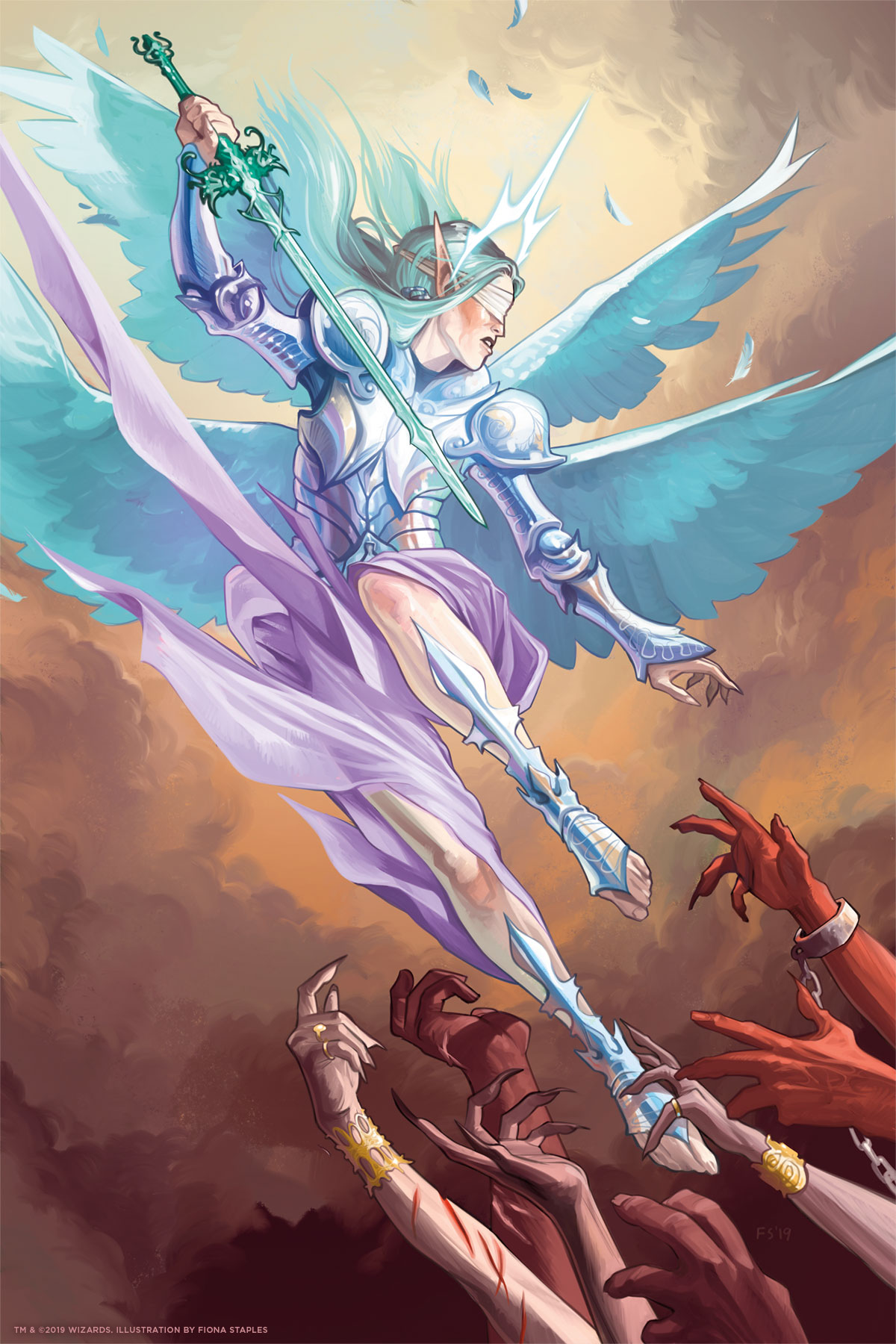
Zariel, in her angelic form, by Fiona Staples
Even as excitement surrounding Adventures in the Forgotten Realms wanes, and Asmodeus the Archfiend takes his place as a Necropotence in the command zone, this question can stay with us as we turn now to Arlinn Kord and the werewolves of Midnight Hunt: What is it that we want? What is the truth of ourselves? And what does that demand of us? In my next article, I’ll be taking a look at the spiritual themes in Midnight Hunt. Keep your candles lit and your eyes peeled; I hear the days are getting shorter.
For Further Reading:
Jacob Torbeck, “Consorting with Demons: How Magic Made Black Flavorful and Scared Our Parents.”
Levi Byrne, “Liliana’s Demons.”
Curtis Wiemann, “A Planeswalker’s Guide to Earth: Demons.”
Jacob Torbeck is a researcher and instructor of theology and ethics. He hails from Chicago, IL, and loves playing Commander and pre-modern cubes.

